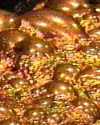
On 26 July 1932, Francis Edward Elmore died, a British technologist who, with his brother Alexander, jointly developed an ingenious yet simple process to separate valuable ore, such as copper, from the worthless rock—even when the metal content is low. This description is a short read, and may give you insight into something you may not have been aware of before, namely, how is the metal economically extracted from a pile of rock? More details are in Elmore's 1898 patent.
On 26 July 1775, Benjamin Franklin became Postmaster General for the American Colonies. This gave him reason to study why sailing ships carrying the mails travelled at different average speeds in opposite directions, and led him to discover and name the Gulf Stream. Of all scientists, Franklin must be one with the most diverse interests, and if any biography deserves to be on your bookshelf, it surely would be his. Today's book pick is: , by . The author received the 1938 Pulitzer Prize in Biography for this work. It contains the most extensive collection of Benjamin Franklin’s autobiographical writings, and vividly portrays Franklin’s insatiable intellectual appetite, a keen scientific mind, a high sense of morality, and a fervent patriotism. The work is also outstanding history. Van Doren skillfully “paints” Franklin’s portrait against the backdrop of the tremendous social ferment, scientific awakening, and tumultuous political events.
It is available from Amazon, typically about (As of earlier time of writing - subject to change.)
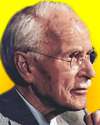 | Man’s unconscious… contains all the patterns of life and behaviour inherited from his ancestors, so that every human child, prior to consciousness, is possessed of a potential system of adapted psychic functioning. |
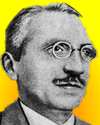 | In my opinion a mathematician, in so far as he is a mathematician, need not preoccupy himself with philosophy—an opinion, moreover, which has been expressed by many philosophers. |
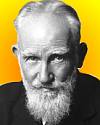 | In medical practice a man may die when, scientifically speaking, he ought to have lived. I have actually known a man to die of a disease from which he was, scientifically speaking, immune. But that does not affect the fundamental truth of science. |
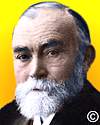 | Every good mathematician is at least half a philosopher, and every good philosopher at least half a mathematician. |
| Before you look at today's web page, see if you can answer some of these questions about the events that happened on this day. Some of the names are very familiar. Others will likely stump you. Tickle your curiosity with these questions, then check your answers on today's web page. | |
| Births | |
 | Paul Walden, born 26 Jul 1863, was a Russian-German chemist who was teaching at Riga when he discovered the famous Walden inversion of malic acid, by which two varieties of the malic acid molecule could be formed. How were these two forms detected? |
 | A Swiss psychologist, born 26 Jul 1875, met and collaborated with Freud in Vienna in (1907-13), but then developed his own theories, which he called “analytical psychology.” He is known as he “father” of psychoanalysis, and his work has been influential in psychiatry. Can you name this scientist? |
| Deaths | |
 | Kunihiko Kodaira (1915-1997) was awarded the Fields Medal in 1954 for his work. In what field is this prize awarded? |
| Events | |
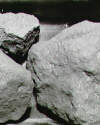 | On 26 Jul 1969, scientists had their first look at the rocks that Apollo 11 astronauts brought back from the moon. A “rock box” was opened for the first time in the Vacuum Laboratory of the Manned Spacecraft Center's Lunar Receiving Laboratory. What was the mass of all the moon rock samples brought back by Apollo 11? |
 | On 26 July 1974, aspartame, a new artificial sweetener made from aspartic acid and phenylalanine, was approved by the U.S. Food and Drug Administration. Objections delayed its final release until 1981. Its uses now include candy, drinks, gelatine and chewing gum among others. It was also marketed by G.D. Seale in small packets as a sugar replacement in beverages. Under what brand name was this sweetener marketed? |
Fast answers for the previous newsletter for July 25: Peking Man • polybutadiene • Charles Macintosh • gyroscope • the decade including the year 1959 • France to England • Bikini Atoll.
 If you enjoy this newsletter, the website, or wish to offer encouragement or ideas, please send feedback by using your mail reader Reply button.
If you enjoy this newsletter, the website, or wish to offer encouragement or ideas, please send feedback by using your mail reader Reply button. Your click on a Facebook, StumbleUpon, or other social button on the site webpages is also a welcome sign of appreciation. Thank you for using them.
© This newsletter is copyright 2020 by todayinsci.com. Please respect the Webmaster's wishes and do not put copies online of the Newsletter — or any Today in Science History webpage. (If you already have done so, please remove them. Thank you.) Offline use in education is encouraged such as a printout on a bulletin board, or projected for classroom viewing. Online, descriptive links to our pages are welcomed, as these will provide a reader with the most recent revisions, additions and/or corrections of a webpage. For any other copyright questions, please contact the Webmaster by using your mail reader Reply button.
--
If you do not want to receive any more newsletters, Unsubscribe
To update your preferences and to unsubscribe visit this link
Executive Real Estate Business Class
-
"It was like a man with wings. It wasn't like anything you'd see on TV or in a monster movie." ...
About the publisher
Search This Blog
Blog Archive
-
▼
2021
(585)
-
▼
July
(50)
- Newsletter for Saturday 31 July.
- Newsletter for Friday 30 July.
- Power off and play this summer!
- Newsletter for Thursday 29 July.
- Newsletter for Wednesday 28 July.
- Newsletter for Tuesday 27 July.
- Newsletter for Monday 26 July.
- Newsletter for Sunday 25 July.
- Newsletter for Saturday 24 July.
- Newsletter for Friday 23 July.
- Newsletter for Thursday 22 July.
- Newsletter for Wednesday 21 July.
- Newsletter for Tuesday 20 July.
- Newsletter for Monday 19 July.
- The Machines That Built America Premieres Tonight
- Newsletter for Sunday 18 July.
- Newsletter for Saturday 17 July.
- Newsletter for Friday 16 July.
- Newsletter for Thursday 15 July.
- Newsletter for Wednesday 14 July.
- Newsletter for Tuesday 13 July.
- On This Day for July 12 - Geraldine Ferraro design...
- Newsletter for Monday 12 July.
- Inventing ‘The Machines That Built America’
- On This Day for July 11 - Duel between Aaron Burr ...
- Newsletter for Sunday 11 July.
- On This Day for July 10 - Telstar 1 launched, John...
- Newsletter for Saturday 10 July.
- On This Day for July 9 - Catherine the Great assum...
- Newsletter for Friday 9 July.
- New Season! Hope, Through History Podcast
- On This Day for July 8 - Vasco da Gama's first voy...
- Newsletter for Thursday 8 July.
- Ending soon: savings that pop! 🎆
- On This Day for July 7 - Hawaiian Islands annexed ...
- Newsletter for Wednesday 7 July.
- On This Day for July 6 - Anne Frank forced into hi...
- Newsletter for Tuesday 6 July.
- On This Day for July 5 - Israel's Law of Return pa...
- Newsletter for Monday 5 July.
- On This Day for July 4 - Declaration of Independen...
- Newsletter for Sunday 4 July.
- July 4th Sale at the HISTORY Store!
- On This Day for July 3 - Battle of Gettysburg ende...
- Newsletter for Saturday 3 July.
- On This Day for July 2 - Civil Rights Act signed, ...
- Newsletter for Friday 2 July.
- July 4th savings that pop!
- On This Day for July 1 - Dominion of Canada establ...
- Newsletter for Thursday 1 July.
-
▼
July
(50)
-
Blogroll
-
About
HistoryFact










0 comments:
Post a Comment